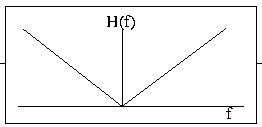
Filter Analysis
Overview
As you may remember, during our mathematical analysis, we discovered that in the Fourier domain each projection is multiplied by |w|. We wanted to see just what kind of impact the value of |w| had on the projections and in the resulting reconstructed image. Through our research, we discovered that |w| acts as a filter to the projections and can thus be manipulated to emphasize the high or low frequencies of the projections. It did not seem that any filter gave the most desired results even though most places felt as if the ramp filter provided the "best" reconstructed image. A picture of the ramp filter is shown below:

All of this speculation led us to ask ourselves one question: Does the perfect filter exist? We wished to see just what advantages and disadvantages different filters had on the reconstructed images.
Experiment & Results
We looked at several different types of filters to try to determine which one yields the best results in our
back-filtering algorithm. We looked at a ramp filter with a low cutoff frequency, an FIR filter in the form of a length 32 boxcar filter, an IIR filter, an 8th order lowpass Butterworth filter,
a "inverse ramp" filter, a sine wave filter, and a stretched-sine wave
filter (one with larger wavelength). We know from our intense research that the ramp filter should give us the best results. Why that is we will try to discover later.
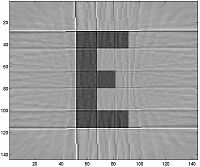
Ramp Filter |
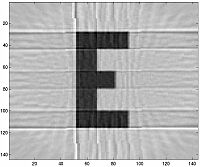
Sine Wave |
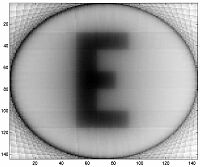
IIR Filter |
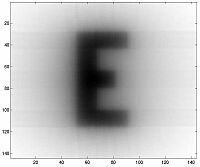
Inverse Ramp |
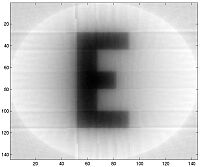
"Stretched" Sine |
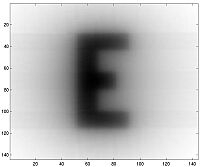
Butterworth |
It is tricky to interpret the results we got from this experiment. In general, our high pass filters produced much clearer and sharper recreations of our original image. However, there were some dark "smearing" lines evident along the edges of our objects especially in objects with corners (i.e. squares, rectangles) as opposed to more smooth ones. For low pass filters, those lines were not there but the images were blurry, something that is not desirable for doctors and scientists trying to examine something in close detail. All in all, we would agree that the ramp filter gives us the best results.
We can see from our experiments that just about each filter has some
advantages and disadvantages. One must decide what is more necessary: less
noise, clear image, or faster results. We discovered these, as well as
other issues, must be thought of when deciding which filter to use.
BUT, this is not the whole story ...